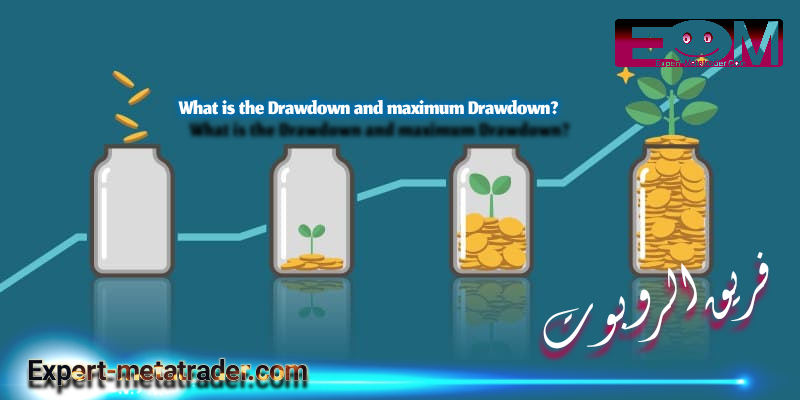
Capital loss We assume that we know that proper capital management will make us profitable in the long run. But now we want to show you other issues. What will happen if capital management rules Do not comply?
Consider the following example and think about it:
Consider that you have 100 thousand tomans of money and you have lost 50 thousand tomans, what percentage of your account have you lost?
It is clear that you will simply answer 50%. This question was simple enough to explain the concept of capital loss. This is what traders call DRAWDOWN.
Labels: Order to build a Forex robot , Build a stock trading robot , Build a trading robot , Trader robot design , Free Forex Robot , Forex robot programming , Forex Expert Making Tutorial , Build a trading robot with Python , Download Forex Trading Robot , Buy Forex Trader Robot , Automated Forex Robot , Free stock trading robot , Learn how to build a Forex trading robot , Alpari trading robot , Forex robot for Android , MetaTrader robot design , MetaTrader robot programming , Forex robot design , Forex robot programming , Automated trading
It should be noted that capital loss, or DD for short, is the amount of personal capital loss that occurs as a result of a series of unsuccessful or loss-making transactions. It is normally obtained from the difference between the previous level of capital before losses and the current level after losses, and traders usually calculate it as a percentage of their account.
Failure line (loss)
In trading, we are always looking for an edge. That’s all the reason traders are trying to expand their system. A trading system that is 70% profitable seems to be very convenient. But just because your system is 70% profitable. Does that mean that 70 out of every 100 transactions are profitable? The answer is: not necessarily !! How do you know which 70 trades out of those 100 trades will benefit? The answer is that you do not know !! You can lose all the first 30 trades and then win all the next 70 trades while still 70% of your system trades are successful. But you have to ask yourself if you lose 30 trades in a row at all. Are you still in the market?
This is why capital management is so important. It does not matter what system you use. But you must consider the limits of your failure. It should be noted that professional poker players, who have even made their entire lives with this job, have defined a limit for themselves and therefore are still profitable. The reason is that good poker players actually practice capital management. Because they know full well that they will definitely not win the whole tournament. So, they would only resort to this as a last resort.
This is what you need to do as a trader. Capital loss is part of trading and there is no trader who has not struggled with capital loss. The key to being a successful trader is to have a trading plan that can get you there after these large amounts. Keep the loss going and get it back in the game. Definitely a very important part of your trading plan should be the capital management rules. Only risk a small percentage of your trading capital and this way you can survive the breaking edges and Compensate for these small losses in your profitable trades. Remember that if you practice the right rules of capital management, you will become a trader who will definitely be in the market in the long run and the result of his trades will definitely be profitable.
Never risk more than 2% per trade
How much should you risk in each transaction? This is a very good question that every trader should definitely ask himself at the beginning of the trading path and even at the beginning of each trade. Try to limit the risk of all your trades to 2% of the remaining capital (not the initial capital). But keep in mind that this amount can be a little too much if you are new, and if you are at the beginning of the training path, try to keep this amount of 1% of the remaining capital for a while. In this section, we want to make a very important comparison that In one situation the risk of each transaction is considered 2% and in the other position the risk of each transaction is 10% of the capital. You try to put yourself in the position of both traders to understand the difference in their situation and feelings.
You can easily see that there is a huge difference between a 2% risk and a 10% risk in every trade. If you fail in a trap and lose 20 trades in a row, in the end with a 10% risk in each trade, you are left with only $ 300, which by calculating the capital loss, we find that 85% of the total capital is lost. But if you look at capital management at 2% per transaction, you still have about $ 14,000 left at the end of the 20 losing trades. Calculating the capital loss shows that about 30% of the total capital is lost.
Surely the last thing we want to do is lose 20 trades in a row. But let’s be reasonable. Look at the difference between losing 5 trades in a row on both accounts. In the 2% risk account, there is still about $ 18.5 thousand left in each transaction, but in the 10% risk account, about $ 13,000 remains, which is less than the number in the 2% risk account, assuming a loss in 20 trades. Will remain.
We hope you understand the calculation and table above. If you have the right capital management, even if you have a capital loss due to a series of unsuccessful transactions, you will still have enough left in your account to be able to continue your successful process.
Now the question is, can you imagine losing 85% of your capital? With a simple calculation, you will find that for the 85% of the capital you lost, you will have to make a profit of 566% of the remaining capital to return to your original account amount. Believe that neither you nor anyone else He no longer likes to be in this situation. In order to better understand the story, we have calculated and placed the amount of capital loss in percentage and the amount of profit to compensate it in the table below. This table is also referred to as the swamp of loss, because the more you lose, the more you actually sink into a swamp from which the way to escape becomes harder and harder.
We hope that you will find the following simple examples and explanations as a guide and remember that you are only allowed to risk a small percentage of your capital so that you can help yourself in times of loss. Get rid of it easily. Always remember to be a trader, not a gambler.
I remember that at the beginning of the trading process in the global markets, I was in a class and the teacher of that class in the first session of the topic of capital management asked everyone to open a virtual account and within a month with very simple conditions like this Considering a 2% risk for each transaction and a maximum of 5 open trades at the same time, try to margin the account (complete the capital) and set a $ 500 reward for this so that whoever calculates the account earlier will be awarded. . I can almost say that we all doubted his sanity and we were sure that we could do it in much less time. But everything we did did not work out. Without analysis, we would open a trade wherever we were, but we had to comply with the 2% risk according to the conditions and have a maximum of 5 open trades.
Labels: Order to build a Forex robot , Build a stock trading robot , Build a trading robot , Trader robot design , Free Forex Robot , Forex robot programming , Forex Expert Making Tutorial , Build a trading robot with Python , Download Forex Trading Robot , Buy Forex Trader Robot , Automated Forex Robot , Free stock trading robot , Learn how to build a Forex trading robot , Alpari trading robot , Forex robot for Android , MetaTrader robot design , MetaTrader robot programming , Forex robot design , Forex robot programming , Automated trading







